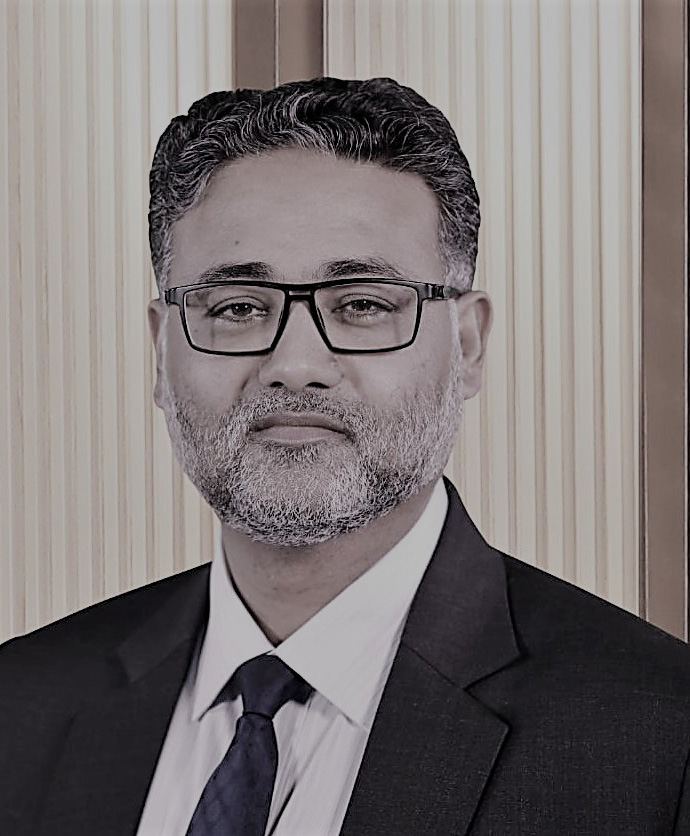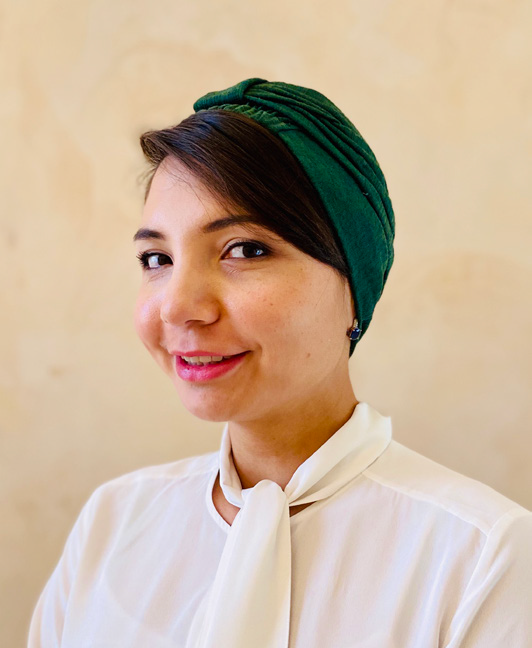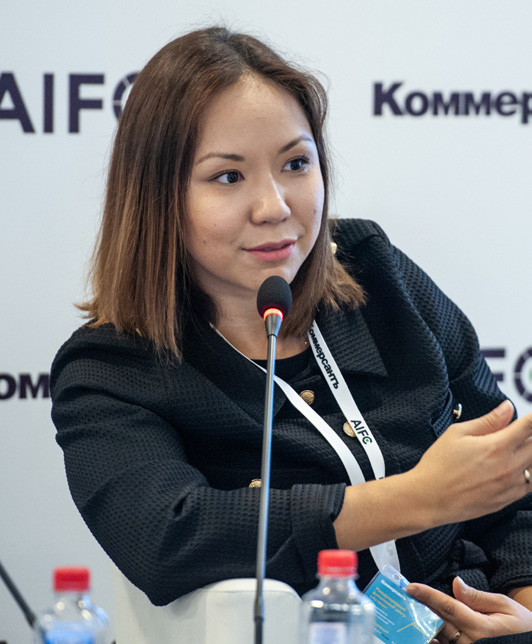Why has Islamic finance remained behind conventional finance despite having been in the market for nearly 50 years? Has it lost the plot or there are some other factors that haven’t allowed it to develop the way it should have been developed as an alternative banking and finance system?
There is solid evidence to suggest that Islamic finance can be harnessed as an alternative banking and finance system, given its market share, growth in recent years and potential among Muslims and non-Muslims alike.
However, despite the positive aspects of the Islamic economic system, the criticisms are valid too. Islamic finance cannot merely mimic the conventional system. It needs a solid model and innovative products and services that serve Maqasid al-Shari’a.
We spoke to a number of professionals and asked them to share their opinions as to what are the factors that have contributed to the Islamic finance industry not having a strong foothold in contrast to the conventional financial system.
A general consensus suggests that the customers need to be assured that the products and services offered by the Islamic banking industry are indeed Islamic, a regulatory framework in place to standardise the Shari’a rulings, human capital and resources required to expand the market share, and products and services that are at par with conventional finance.
Practitioners like Asfand Zubair Malik list a number of factors while Laura Kuanova thinks that Islamic finance is still in its infancy to be compared with conventional finance that already has a history of thousands of years. Rohail Khan suggests a refocus on equity-based financing models while Dr Adnan Aziz is in the favour of shifting the emphasis from being merely Shari’a-compliance to active pursuance of Maqasid Al Shari’a.

DR ADNAN AZIZ
Islamic Banking and Finance Practitioner
Answer to this question depends on the perspective in which one looks at Islamic finance. In terms of Islamic finance numbers, it has not only continued to grow until recently but also surpassed its conventional counterpart on certain accounts including (for example) asset size and growth rate, which are reported by IFSB to be over USD2 trillion and about 7% respectively, as of 2018. However, Islamic finance is still far from being taken as a mainstream alternative to the conventional banking and finance industry. In my view, the fundamental reason behind this lack of acceptance by the mainstream is the disconnection between the legality of Islamic finance (Shari’a Compliance) and the purpose behind this legality (Maqasid Al Shari’a).
In order for Islamic finance to become a mainstream practice, the emphasis needs to shift from mere Shari’a compliance to active pursuance of Maqasid Al Shari’a. This is not to suggest that Islamic finance can remain Islamic on the basis of Maqasid Al Shari’a alone. Instead, Islamic finance needs to demonstrate to the wider world as to “how does (and not just ‘how can’) following a particular legal system (Shari’a) leads to creating a socially good society in a commercially viable manner”. To tell that Islamic finance must avoid paying and charging of interest (which of course, Islamic finance must), Islamic finance industry should focus on building success stories as to how adhering to the principle of prohibition of Riba helps make the world a better place for us all to live. If Islamic finance was able to create a tangible and sustainable track of such performance and impact, the world will be interested in understanding and adopting (in time) the method that helps achieve such an outcome. This will increase the likelihood of Islamic finance becoming a true alternative candidate for mainstream banking and finance
This, however, needs a deeper commitment and conscious effort from all stakeholders of the Islamic finance industry. What needs to be understood is that a dedicated (but guided) approach, towards the creation of social good out of every financial transaction, will not come at a cost to the Islamic finance players. In the medium to long term, this will only lead to higher profitability for the Islamic finance industry but in a socially conscious manner. This approach will also help better the rather materialistic and unethical image of the financial industry at large. This will be in addition to helping better the image of the Islamic finance industry in the eyes of those who remain sceptical of the Islamic finance industry primarily due to its disconnection with the Maqasid Al Shari’a.

DR SUTAN EMIR HIDAYAT
Director of Education and Research Indonesia’s National Committee for Islamic Economy and Finance (KNEKS)
Islamic finance has shown enormous development over the decades. This development is supported by the growing number of Muslim populations in the world along with the increasing awareness among Muslims about the Shari’a-compliant financial instruments on a daily basis. With all the progress made in the Islamic finance industry, we know that struggles have been attempted and indeed it is not easy to reach this point but we cannot deny that there are still some main factors that are keeping us left behind the mainstream finance itself.
- Awareness and Literacy
There is a lack of awareness and literacy about Islamic finance products and instruments. Even though Islamic finance is growing at the promising pace that cannot be ignored, we cannot deny that it requires an increasing number of people to be aware of, have knowledge, and the Islamic financial system for it to move forward. As I said before, awareness among the masses is increasing but it is still not enough. Moreover, this lack of awareness and literacy has divided the population into groups such as, a certain group of people who are still sceptical that Islamic bank is not really Islamic or just mimicking the mainstream one. Besides, in terms of religious values uphold by the Muslims, there is also a group of people who do ignore the prohibited practices of riba, gharar, and maysir in the Islamic finance world. This kind of debate does influence the growth of Islamic finance globally.
- National Regulatory Framework
Fortunately, governments in most of the Muslim countries gradually show their support to the development of Islamic finance ranging from providing political support, for instance, by creating national agency or team in developing Islamic finance to providing a supportive enabling environment through legal aspect on the national scale. But it doesn’t happen a lot in non-Muslim countries. Islamic finance practices cannot be fully implemented because there is no legal framework that supports and legitimates its implementation. Moreover, it takes much time for governments to build the legal framework itself since they still have many problems to solve in the country. At the end of the day, the country doesn’t view the uniqueness and the potential of Islamic finance in terms of supporting the national economy. Actually, this point is very much related to the previous point of awareness and literacy. Ultimately, we should increase the awareness of not only the society but also government officials. It is not easy to educate and advocate Islamic finance at the national level.
- Islamic Financial Institutions’ Capacity
Despite the positive growth of Islamic financial institutions (IFIs) all over the world, there is still a limitation in its capacity. The IFIs’ capacity encompasses some aspects such as capital, human resources, features, and product innovation. The capital of IFIs is also much lesser than the conventional one, making it is very difficult to rival its counterpart in term of market share. From the human resources side, we need more and more people who can support the operations of IFIs as well as can innovate in developing Islamic finance features and products. Not to mention the mismatch that happens between the industry and academic institutions in many countries where the research conducted by the academicians or researchers is not based on the industry need. That is why the growth of Islamic finance including banking, non-banking, and capital market sector is relatively slow. Furthermore, Islamic finance loses its core and uniqueness in the very first place: equity-based finance. Today’s Islamic finance landscape is dominated by a loan or debt scheme.

ROHAIL A. KHAN
Senior Islamic Banker
I recently asked a Western Banker what is the current status of Islamic banking and finance, and he promptly replied: “the system appears hung-up with Murabaha-based transactions and on issuing Sukuks”. I had to agree with him.
Dear readers. Let us stop for a while and remind ourselves of the evolution that took place during the last five decades.
- In 1954, the modern era (post-Islamic Golden age), Prof Uzair Hasan was instrumental in formally propounding the need and utility to implement “Islamic Economic System” across the Muslim World.
- Prof Uzair Hasan was followed in this mission by various senior economists – with Prof Umar Chapra, Dr Manzer Khaf, Dr Ausaf Ahmed, and Prof Nejatullah Siddiqui taking the lead.
- These senior economists and recent peers have pragmatically proven that the Islamic Economic System is “not the alternative” – rather a “better substitute” to all other economic systems tried by the society.
- Mit-Ghamr Bank, established in 1963 in Egypt, is acknowledged as the first Islamic bank of the modern era. Dubai Islamic Bank (1975), Islamic Development Bank (1975), Kuwait Finance House (1977) and Al-Rajhi Bank (1978) formally spear-headed the sector and paved ways for future progress.
- In 1981, HRH Prince Mohammed bin Faisal Al-Saud founded “new trends” by setting-up a “worldwide chain” of Islamic banking institutions under the banner of Darul Mal Al-Islami (DMI). The DMI Group, out of Switzerland, rapidly matured into the world-renowned chain of Faysal Islamic Banks.
- These efforts to offer the world an ‘Islamic Banking System’ were duly strengthened by Sheikh Saleh A. Kamel who, in 1985, launched the global chain of Al-Baraka Islamic Banking Group;
- Islamic Development Bank (led by Dr Ahmed Mohammed Ali) strengthened the sector by catalysing the practice and research of Islamic banking and economics. It’s research arm, IRTI (Islamic Research and training institute) remains to date an industry leader.
- In the 1990s, the Islamic banking sector witnessed a “unique wave of support” from renowned Western economists, notably: Prof Rodney J. Wilson of Durham University, Prof Samuel L. Hayes of Harvard University, and Prof Daud Vicary Abdullah of INCEIF, duly supported by senior economists like Prof Mohamed El-Gari, Prof Khursheed Ahmed (Islamic Foundation), Prof Abbas Mirakhor, Dr Yahia Abdulrahman, Prof Hossein Askari, Prof Nazim Ali, Dr Zameer Iqbal, Dr Daud Bakar, inter alia.
- Among the conventional global banks, HSBC UK took the lead in 1998 by setting-up the Amana Islamic Bank under the leadership of Mr Iqbal A. Khan.
- Since then the world has seen a series of over 400 Islamic banking institutions successfully operating across five continents.
- AAOIFI (1990), IFSB (2002), and ISRA (2008) have ensured that the sector is regulated by International accounting, auditing, and supervisory standards.
- Evolution of Islamic banks in the Western World. USA: Lariba Bank (1987); China: Hezhou Islamic Finance (1987); Russia: Badr Forte Bank (1997); UK: Islamic Bank of Britain/Al-Rayan Bank (2004), Gatehouse Bank (2008); Singapore: Islamic Bank Asia (2008); France: Noor Assur (2012); Germany: Kuveyt Turk (2015); and Australia: Islamic Bank of Australia (2019).
The above is simply a recap to describe the pioneers and founders who carried out the renaissance of Islamic economics and banking in the Modern Age.
The rapid evolution of Islamic banks, during the last thirty years, is validated by the current facts1, such as;
- In 2018, there were 418 commercial Islamic banks worldwide. In the same year, the total assets of global Islamic banks amounted to about USD1.76 trillion, sharing about 6% of the total global banking assets.
- In 2018, the total Sukuk issued were 305 with value outstanding amounted to USD470 billion.
- In 2018, the value of Islamic mutual funds outstanding worldwide amounted to USD97 billion. According to projections for 2024, the total value of outstanding Islamic funds will exceed USD216 billion.
- In 2018, the total value of takaful assets amounted to about USD46 billion with 335 takaful operators. In 2024, it is projected the total takaful assets worldwide will exceed USD65 billion.
- Total value of all Islamic financial assets worldwide is over USD2.5 trillion.
Solid Performance and Indicators
Above statistics and the preceding prologue confirm that the Islamic banking and finance sector (including Islamic insurance) has:
- Evolved progressively during the last five decades;
- Enjoys solid pragmatic foundations, standards and practices;
- Received technical acknowledgement in both Muslim and Western worlds;
- Shown outstanding empirical performance and proven its worth during various global recessions;
- Developed sound future growth prospects;
- Matured as a fully viable alternative system (vs conventional).
Focal points – Going forward
It is but an established norm that identifying new directions and exploring new growth arenas does cause some loss of grounds. The standards set-in by the early founders of Islamic economy, banking, and finance system, did face compromises and lapses during the last three decades.
Reduced focus on equity-based financing is one valid example.
Indeed, it is understandable that the growth of “Debt-based Financing” (through Murabaha and similar models) was necessary (by default) to fill the gaps and sustain the sector’s global growth.
Going forward, the “sector in totality” needs “strategic transition from predictive to prescriptive mode”.
Internal Purge in the following key critical areas is strongly recommended to induce diversification of the sector, streamline future directions, and inculcate global acceptability as a well-rounded economic and banking system ‘superior’ to other existing systems:
- Re-focus on Equity-based Financing Models;
- Re-focus on Maqasid e Sharia’;
- Re-focus on Islamic Economic System (adoption by OIC states).

LAURA KUANOVA
Islamic Finance Educational and Scientific Centre
Al-Farabi Kazakh National University
Are 50 years enough for the development of an entire specific financial industry? It is a well-known fact that the conventional financial system has a history for hundreds, even thousands of years.
Firstly, the development of Islamic finance and banking requires more time to obtain the essential speed, as it started from scratch. The legislation of banking and finance in the absolute majority of the countries is cut out for the conventional system, which is based on interest. In some countries, Islamic finance is not directly prohibited by law, but in banking acts and financial regulation acts. The fixed per cent rate, that is interest (Riba) is laid down as the main profit-making mechanism. The legislative framework is one of the main obstacles of Islamic finance development, even in countries where Islamic financial institutions and organisations are permitted by law, their activity is complicated in terms of accounting norms and tax, as there must be real asset for any Islamic financial contract. This, in turn, leads to complication and increasing costs of the Islamic finance development process.
Secondly, the contemporary conventional financial markets are growing faster than the GDP. According to some estimates, global financial assets increased 15 times, while the global GDP showed only 2.65 times growth for the same 25 years1. The correlation between conventional finance and real assets has been lost, and this situation has led to financial crises within defined periodicity.
These days Islamic finance in the world is constructed on the concept of copying the tools of conventional finance.
On close examination it could be seen that the Islamic financial institutions have gone by the direction of providing analogous to conventional financial products, for instance, credit is substituted by Murabaha and leasing by Ijara, and anything specific additional was not offered by the Islamic financial organisations.
Islamic finance, initially, is finance based on partnership with profit and loss sharing, and risks as well. This was the main idea for the creation of the Islamic financial system, that is building the financial relationship between the customer and financial institution, based on the partnership, for getting rid of the usury and debt relations. If to analyse the existing practice of Islamic finance, there could be seen that the interest was eliminated formally, while the credit and debt relationship is still the basis of Islamic financial institutions’ activity, similar to conventional. This replication has led to the disappointment and dissatisfaction from the market side, as well as the consumers. Because for the average citizen, the customer of the financial products there is no difference between Islamic and conventional finance, as they do not feel the difference in conditions, in monetary terms, even in risk sharing. Mainly Islamic banks try to protect themselves from the risks through the risk management system by transferring it to the consumer, one way or the other. In this regard, could we consider Islamic finance as an alternative banking and finance system or is it a replacement and substitution of the concepts and paradigms with minimal compliance of the standards and requirements? We strongly believe, that Islamic finance and banking development, as the alternative system to the conventional, directly depends on the development and promotion of the tools based on partnership relations.

ASFAND ZUBAIR MALIK
Head Product Development & Shari’ah Support Askari Bank Ltd. – Ikhlas Islamic Banking
Islamic banking and finance, in contrast to its conventional counterpart, is an alternative banking and finance system whose core is not in profit maximisation. It is a system based on higher moral and ethical notions such as the prohibition of interest, equitable distribution of wealth, avoidance of Gharar and speculation, risk sharing, and fair treatment of all stakeholders.
Since its inception in the mid-70s, the Islamic financial services industry surpassed a landmark of USD2 trillion worth of assets for the first time in 2017. With around 1,450 Islamic Financial Institutions operating around the globe, the Total Islamic Financing Assets further increased to USD2.524 trillion as opposed to the Total Assets owned by Conventional Financial Institutions, which stood at a whopping amount of around USD400 trillion during 2018.
It is an unpalatable fact that the industry, which was meant to be an alternative to its conventional rival, lacks far behind it in terms of market share. To our chagrin, the system that is more just and transparent has even failed to challenge its counterpart despite having been in operations for nearly 50 years. Now, the question arises as to whether this is due to the fact that it has lost the plot or some other factors have not allowed it to develop the way it should have been. To me, the latter seems more rational and for the purpose of brevity, I would try to summarise a few factors that, from my vantage point, have subdued the growth of the Islamic financial services industry.
- Standardisation
Standardisation in Fiqh ul muamlaat is an arduous task, which is a key problem faced by the Islamic financial services industry. Lack of standardised Shari’a rulings has had a two-fold impact on the Islamic financial services industry attenuating its acceptance among masses even in the Muslim majority countries. On one hand, as an aftermath of the widespread difference of opinion in Ulema on Shari’a validity of certain product structures like Tawarruq, Bai Bithaman Ajil (BBA) and Sale and Lease Back (SLB), the practising religious fraternity did not fully opt for Islamic financial products, while on the other, the general public to a certain extent, apprehended dissimilar Shari’a rulings as ominous to the gist of Shari’a.
This lack of standardisation was not only limited to Shari’a rulings, but it also encompassed difference in accounting treatments and governance structures.
In an attempt to address this issue, Accounting and Auditing Organization for Islamic Financial Institutions (AAOIFI) was set up in 1991. Till date, it has issued around 113 standards across all five key areas of Shari’a, Accounting, Auditing, Governance, and Ethics in order to achieve standardisation and harmonisation of international Islamic finance practices and financial reporting in accordance with Shari’a. While the pace of implementation and adoption of AAOIFI standards across different jurisdictions is dawdling, it is believed to bear fruits in the future God-willing.
- Human Capital and Branding
The skill set of vehement and zealous proponents is the key success factor behind an idea or system. In recent times, professionals with a skill-set carefully nurtured and honed over years earned impeccable brand loyalty from their customers, which translated into gargantuan financial successes for their organisations. For instance, the customers of Harley-Davidson, an American motorcycle manufacturer, would wait for six months for delivery of a custom Harley-Davidson (to give them credit, they have got it down from a year). There are people who walk around Harley-Davidson tattoos on their bodies without even having the ability to purchase the product. Why would a rational person tattoo a corporate logo on his skin? That’s insane. However, the reason is simple. Their logo has become a symbol. It no longer identifies a company and its products; it identifies a belief.
Ostensibly, despite all the inbuilt merits, transparency and fairness, the advocates of Islamic finance were unable to position it as a brand and challenge the conventional interest-based mindset and this was the biggest hurdle for Islamic financial institutions in past decades.
If you ask me, I am quite despondent to share that weak branding and inept human capital were amongst the major contributing factors in limiting global outreach and acceptance of Islamic financial services industry. Ignominiously, the quality of education in Muslim countries has a lot to do with this. For instance, not a single university founded in any Muslim Country was ranked among Top 200 by The Times Higher Education “World University Rankings 2020”.
I am not generalising my point; however, one cannot simply deny the fact that development of skilled human capital and brand positioning are amongst the key issues that we need to address should we intend to take Islamic financial services industry to the world.
- Perception Management
The term “perception management” was first coined by the U.S. Military as part of their Psyops programme, describing how selective information is provided (or denied) to a target audience to influence their emotions, motives and objective reasoning in order to promote a change in behaviour that is favourable to the sponsor.
Proper management of perception as to how the masses will respond to a particular product or idea is key to its success – an aspect which the Islamic financial services industry has somehow failed to address and it is a widespread opinion that the dual-banking system had a lot to do with this. After all, how would an indifferent customer react to a conventional financial institution offering Islamic financial services from the same counter and with the same staff who did not themselves believe in “Riba-Free” notion and lack proper training to differentiate among the two financial products that are based on entirely divergent philosophies?
I believe that the Islamic window operations by conventional financial institutions should be encouraged to facilitate the gradual transformation of economy provided that proper controls are embedded, staff training is ensured and most importantly public perception is adequately managed.
- Regulatory Framework and Political Will
The unfavourable regulatory framework, absence of a level-playing ground and lack of political support have also impaired the growth of the Islamic financial services industry. Let along the western world, even certain Muslim jurisdictions were either too late, or did not grant operating licenses to Islamic financial institutions at all. In contrast, the majority of the jurisdictions which have allowed Islamic financial institutions to operate were unable to provide a conducive environment for their incubation.
- Misuse of Religious Sentiments in the disguise of Islamic Finance
In some jurisdiction, Ponzi schemes disguised as Islamic investments in the past have restrained the growth of the Islamic financial services industry by impairing its image among the general public. A bunch of racketeers camouflaged as religious scholars were able to siphon money from the general public under the pretence of Islamic financial investment. For instance, in the Islamic Republic of Pakistan, according to an investigation by National Accountability Bureau (NAB), about 33,000 people were robbed of PKR31 billion in the name of Islamic investment, commonly known as Modarabah.
Despite all wickedness, this has been seen as a blessing in disguise in a way that people are now more informed about true Islamic financial institutions and reputed Shari’a scholars. Further, the regulations are strengthened, and market players are now comparatively able to make better financial decisions.
- User-Friendly Shari’a Compliant Financing Products
Availability of user-friendly Shari’a-compliant financing products to meet the customer needs was an enormous challenge encountered by Islamic financial institutions since their inception. Almost half-century has passed, yet the spectre of being unable to meet customer needs haunts the products managers.
Most of the products offered are those which emulate the conventional financing products in a sense that are either too generic or centred on large conglomerates. They fail to meet the retail customer’s unique Shari’a-compliant financing needs such as setting up a small business, hospitalisation and education. Though some institutions were able to address these by using Tawarruq and Bai Inah models, their acceptability has always been questioned.
- An Alternate Standpoint
Islamic financial services industry is meant to be a system that is more transparent and promotes the equitable distribution of wealth. As far as it continues to by the Shari’a and ethical requirements, does it really matter if it is compatible in size with its conventional counterpart? A question I would blithely leave for the readers.

MADINA TAKULOVA
Senior Manager, Islamic Finance Department Astana International Financial Centre
There are certain factors that have hindered the progress of Islamic finance in a pre-dominantly conventional finance domain. Contemporary financial instruments and expressions are often misleading and the general public prefers to remain conservative in the approach. Although Islamic finance has been emerging since the 1970s, the awareness of it has not been predominant until recent years. Another challenge faced by Islamic finance is the harmonisation of the regulatory framework and better cooperation between Islamic and conventional financial standard-setters, and further improvement of supervisory tools.

ASSOCIATE PROFESSOR MURNIATI MUKHLISIN
M.Acc, CFP Rector
Tazkia Islamic University College
The development of Islamic finance for the past 50 years has not been so satisfactory. Expectation after expectation has not been achieved. Bank Indonesia, for instance, targeted Islamic banking market share in 2013 to be at a minimum of 5% of the total bank accounts owned by all Indonesian people. In reality, the market share reached only 4.8%. As for the Malaysian government, it originally aimed for 20 per cent market share for Islamic banks by 2010, but despite the double-digit growth in both lending and assets, the sector has fallen shy of this mark. Islamic banks only brought their share of total banking assets in Malaysia to 19.6 per cent in December 2012. Then Malaysia aimed for an even more ambitious target – a 40 per cent share of Islamic domestic financing by the year 2020, however today after bearing several factors including the COVID-19 impact, Bank Negara may fall short of its target of 40 per cent Islamic financing mix by 2020.
Several Islamic banking researchers and analysts (Kuran (19863, 19954); Moten (20065); Cheng (2006); Yusuf (2006)) assert that: 1. Islamic finance does not provide a comprehensive framework and operational method for modern finance; 2. Classical thought employed to guide the development of Islamic finance does not respond to the current need of Islamic finance; 3. When Islamic finance follows the conventional model, the secularism and capitalism are also adopted therefore the current Islamic finance model does not show it’s real shape.
On top of that, the effort to boost Islamic financial literacy is still very limited. The current Islamic financial literacy programmes are very much formalities. There is still a dichotomy between Islamic finance and daily personal financial activities. Islamic finance subjects are discussed in formal classes, seminars, and conferences but not at home. Therefore, Islamic finance is not embedded in the daily life. The contracts made in the market between sellers and buyers, between employers and employees, between lecturers and students are still very conventional. Islamic finance operators know well about various contracts on Islamic products and services, for the sake of making business and ensuring their Key Performance Indicators are achieved. The capital owners are interested in Islamic finance merely for profit-making, fulfiling commercial objectives and not for promoting individual Shari’a objectives (maqasid-ul- Shari’a). Regulators who set policies for Islamic finance carry the same suitcase with conventional finance because they are not aware of their duties to establish Islamic finance as true and unique Shari’a instrument for all people.
For Islamic finance to supersede conventional finance, first we need to go back to what we have been asked to do. QS At-Taubah (9): 71 describes the duty of every Muslim to uphold justice:
The believing men and believing women are allies of one another. They enjoin what is right and forbid what is wrong and establish prayer and give zakah and obey Allah and His Messenger. Those – Allah will have mercy upon them. Indeed, Allah is Exalted in Might and Wise.
This verse covers all human affairs including that of Islamic finance. Therefore, Islamic finance is a work of an individual that has to be applied in his/her everyday life.
The Holy Prophet SAW did not establish an Islamic bank to introduce the various contracts we have learned so far. Instead, he showed a living example on how he conducted Mudharabah and Musyarakah with Khadijah (his employer then his wife). He pledged his armour in exchange with a sack of food that is currently known as Rahn. It was explained in a hadith narrated by Aishah (RA):
“Rasulullah SAW bought food on credit from a Jew and gave his steel armour as a collateral towards the seller” (Sahih al-Bukhari).
Therefore, it is very urgent and timely that Islamic financial literacy should be everybody’s concern today. It should not only be for developing the Islamic financial industry but also to prepare everyone to be more compelled with his/her accountability in applying Islamic finance into their life. Eventually, when awareness increases and Shari’a becomes everyone’s domain, Islamic finance activities will flourish, because it will be a part and parcel of daily life.



